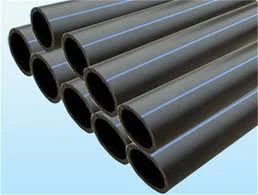តុលា . 30, 2024 12:35 Back to list
cutting hdpe sheets
Understanding the Cutting of HDPE Sheets A Comprehensive Guide
High-Density Polyethylene (HDPE) is a versatile thermoplastic polymer, widely recognized for its strength, durability, and resistance to various chemicals. This makes it a favored material in numerous industries, from packaging to construction and beyond. One common requirement when working with HDPE is cutting the sheets to specific sizes for various applications. In this article, we will explore the essential aspects of cutting HDPE sheets, including methods, tools, and tips for achieving optimal results.
Why Cut HDPE Sheets?
The need to cut HDPE sheets arises from the necessity to create customized parts for various applications, such as plastic containers, reservoirs, and signage. HDPE's properties, including low moisture absorption and excellent impact resistance, make it a popular choice for these uses. Proper cutting ensures that the final product meets size specifications and maintains the integrity of the material.
Methods for Cutting HDPE Sheets
1. Using a Utility Knife For thinner sheets (typically under ¼ inch), a simple utility knife can be used. Mark the desired line of cut with a straightedge, then firmly score the line several times before breaking the sheet along the scored line. This method is effective for smaller projects but requires a steady hand.
2. Circular Saw For thicker sheets, a circular saw is often the tool of choice. Ensure to use a fine-toothed blade designed for cutting plastics. Set your saw to a slower speed to minimize melting and chip-out. Secure the HDPE sheet on a stable surface, and carefully guide the saw along the cutting line to achieve smooth edges.
3. Jigsaw A jigsaw is another effective option, particularly for making intricate cuts or shapes in HDPE. Use a fine blade designed for cutting plastic to reduce fraying along the edges. Again, work at a slower speed to prevent heat build-up that could damage the material.
4. Laser Cutting For precision and complex designs, laser cutting is a highly accurate method. This technique uses a focused beam of light to melt through the HDPE, leaving a clean edge. While this method is more expensive and requires specialized equipment, it is ideal for large production runs or detailed cuts.
cutting hdpe sheets

Tips for Achieving Optimal Results
- Measure Twice, Cut Once Always double-check your measurements before cutting to ensure accuracy. This saves both time and material costs.
- Secure the Sheet To prevent movement while cutting, clamp the HDPE sheet securely to a stable work surface. This helps achieve straight, even cuts and ensures safety during the cutting process.
- Control the Temperature HDPE can melt when exposed to excessive heat. To minimize this risk, use tools that allow for good speed control and avoid prolonged cutting tasks without cooldown periods if needed.
- Smooth the Edges After cutting, edges can often be sharp or uneven. Use a sanding block or a file to smooth out the edges for a professional finish.
- Safety First Always wear appropriate safety gear, including eye protection and gloves, when cutting HDPE. This protects against potential injury from sharp edges or flying debris.
Conclusion
Cutting HDPE sheets is a manageable task when equipped with the right tools and techniques. By selecting the appropriate method based on the thickness and complexity of the cut desired, and following best practices, anyone can achieve high-quality results. Whether for small crafts or large-scale industrial applications, understanding the cutting process of HDPE is essential for ensuring success in your projects.
-
Durable PP Rigid Sheet: Lightweight, Chemical Resistant Solutions
NewsAug.21,2025
-
PVC Grey Sheet for Extraction: Chemical Resistant & Durable
NewsAug.19,2025
-
Durable PVC Pipe Fittings for Plumbing & Irrigation Needs
NewsAug.18,2025
-
HDPE Steel Belt Reinforced Spiral Corrugated Pipe | High Strength
NewsAug.17,2025
-
HDPE Pipe Fittings: Durable, Leak-Proof Solutions
NewsAug.16,2025
-
Premium CPVC Sheet: High-Temp & Chemical Resistant Solutions
NewsAug.15,2025

